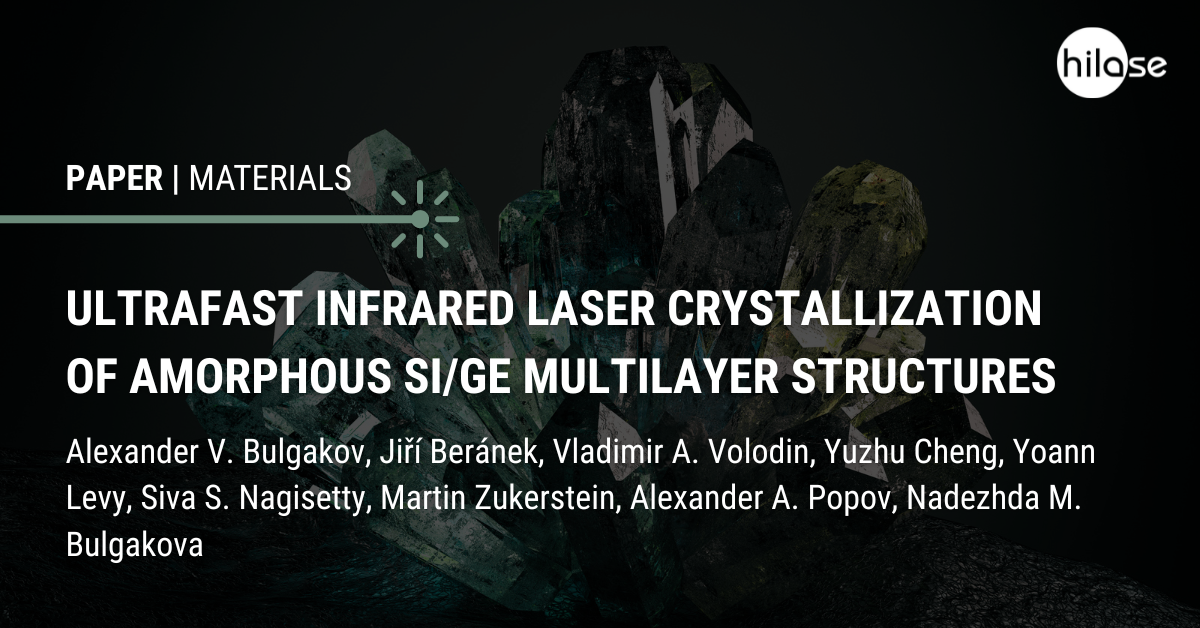Read a new paper published in the Materials journal collaborated on by Alexander V. Bulgakov (Nanomaterials team leader), Jiří Beránek (Ph.D. Student: Laser-matter interaction), Yoann Levy (deputy head of Scientific Laser Applications and team leader of Laser material processing), Martin Zukerstein (postdoctoral researcher: Laser material processing) and Nadezhda M. Bulgakova (head of Scientific Laser Applications and team leader of Laser-matter interaction).

They worked on this study titled Ultrafast Infrared Laser Crystallization of Amorphous Si/Ge Multilayer Structures with Vladimir A. Volodin (Rzhanov Institute of Semiconductor Physics, Russian Academy of Sciences), Yuzhu Cheng (Novosibirsk State University), Siva S. Nagisetty (Coherent LaserSystems) and Alexander A. Popov (Institute of Physics and Technology, Russian Academy of Sciences).
Silicon–germanium multilayer structures consisting of alternating Si and Ge amorphous nanolayers were annealed by ultrashort laser pulses at near-infrared (1030 nm) and mid-infrared (1500 nm) wavelengths. In this paper, we investigate the effects of the type of substrate (Si or glass), and the number of laser pulses (single-shot and multi-shot regimes) on the crystallization of the layers. Based on structural Raman spectroscopy analysis, several annealing regimes were revealed depending on laser fluence, including partial or complete crystallization of the components and formation of solid Si–Ge alloys. Conditions for selective crystallization of germanium when Si remains amorphous and there is no intermixing between the Si and Ge layers were found. Femtosecond mid-IR laser annealing appeared to be particularly favorable for such selective crystallization. Similar crystallization regimes were observed for both single-shot and multi-shot conditions, although at lower fluences and with a lower selectivity in the latter case. A theoretical analysis was carried out based on the laser energy absorption mechanisms, thermal stresses, and non-thermal effects.








